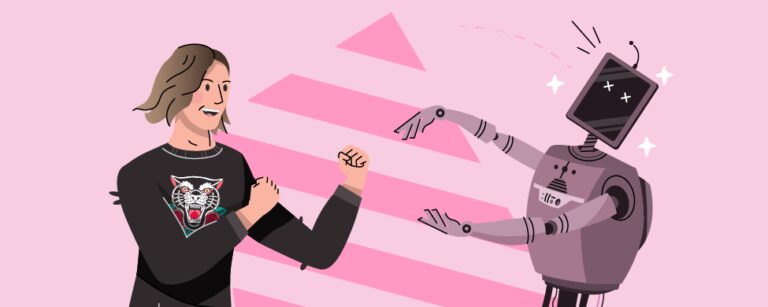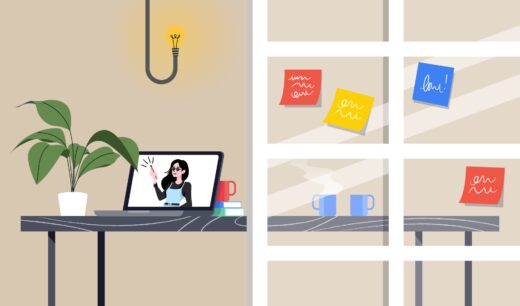Designers Vs OpenAI
4 min read

“Nooooooooo, my career is doomed.
OpenAI is going to replace me” 😭😭😭
Designers, everywhere...
How do we use OpenAI to assist web designers, not replace them?
These are not new feelings. When Wix came to market, I feared that my job as a web designer would become obsolete and clients would prefer this drag-and-drop WYSIWYG style website creation.
I soon calmed my nerves and understood that there would always be brands that need a truly bespoke digital design to elevate their business, and for this to all be underpinned by strong UX thinking that ensures their audiences are considered at every touchpoint.
Why OpenAI will not replace designer roles
Let’s move on. The emergence of AI-powered technologies has undoubtedly sparked the same concerns all over again. I keep reading that web design is one of the many roles that ChatGPT and the impending Google Sparrow AI could replace. At ease, soldier. There are several reasons why this will never be the case!
Creativity and empathy
Both are huge factors in designing for the web. Designers need to understand human behaviour, marketing, and branding to create websites that meet their intended goals. It is essential to get into the mindset of different user types to deliver a beautiful and usable website. As a UX thinker, I often compromise between business and user needs. AI technology will never have the empathy levels to achieve this.
Context
The likes of ChatGPT will not know the complete picture of a client’s past and future needs or their customer needs. For example, as part of our website research, we may look at actual customer complaints to ensure we can alleviate their pain points through our customer journeys. OpenAI won’t have access to the broader context we, as designers, regularly pull on to inform our decisions.
Collaboration
Another important aspect of web design is collaboration. I’m constantly talking with content creators, developers, and client stakeholders to ensure that everyone’s vision is turned into a successful website. AI language models cannot replace the human connection and communication critical to effective collaboration.
How can OpenAI assist web designers rather than replace them?
Right, we’ve worked through all our anxieties and can safely say that OpenAI is not really a threat to our livelihoods. (It is not set to ruin my 20-year career - hurrah!) So how can we use this technology as a tool to assist our processes and productivity?
Writing
We all dream of content-first in a web design project, but that’s not always possible. ChatGPT can generate text content that can be used as temporary placeholders to assist with design layouts. Some requests that I’ve made recently:
Write an introduction for a landing page about temporary aircraft hangars
Write copy to persuade someone to sign up for property alerts
Write an error message for a file upload mistake
Write me a blog article which explains why Chatgpt isn't the end for web designers - ONLY JOKING!! ;p
Personalisation
Personalised experiences are far more engaging on a website. OpenAI tech can generate personalised content based on user data, such as names and preferences. Some examples:
Write a personalised welcome message for first-time mums visiting a webpage about weaning
Rewrite this headline to make it more appealing to analytical minds
Pretend you are a landlord and write some testimonials for an estate agent
Research
It’s hard to stay up-to-date with changing trends, competition, and audience insights. ChatGPT can be used to gather information quickly to assist design thinking when you need new research and perspectives on a problem. Here’s the type of thing it could help with:
What are the needs of busy mums when they buy baby food online?
What’s a good user experience for selecting a brick online?
What are the pain points of a user unsubscribing from a newsletter
In conclusion
If we embrace OpenAI technology and fold it into our design processes, it can be a valuable addition to our toolkit. My final thoughts are that it will be most valuable in reducing procrastination and giving prompts to keep the momentum of a project.
As a designer, I can get stuck in a UX loop, overthinking different scenarios, or hit a creative blocker where content could help kickstart the flow. Tools like ChatGPT and Google Sparrow can provide these necessary prompts, suggest placeholder content to work with and give a new point of view when required.
I’m excited to explore this technology more and discover other opportunities where it can support a successful design workflow. I’ll keep you posted!
If you're looking to unlock the power of UX Design with a design team that champions your brand, your business and your customers, then get in touch.

Lucy Williams
A Principal UX and Digital Designer with almost two decades of experience. She loves balancing UX thinking with digital creativity to design innovative & vibrant products.
She has specialist knowledge in digital brands and sustainability.
Connect on LinkedIn.
Top 5 questions you can expect in a web design workshop
5.5 min read
